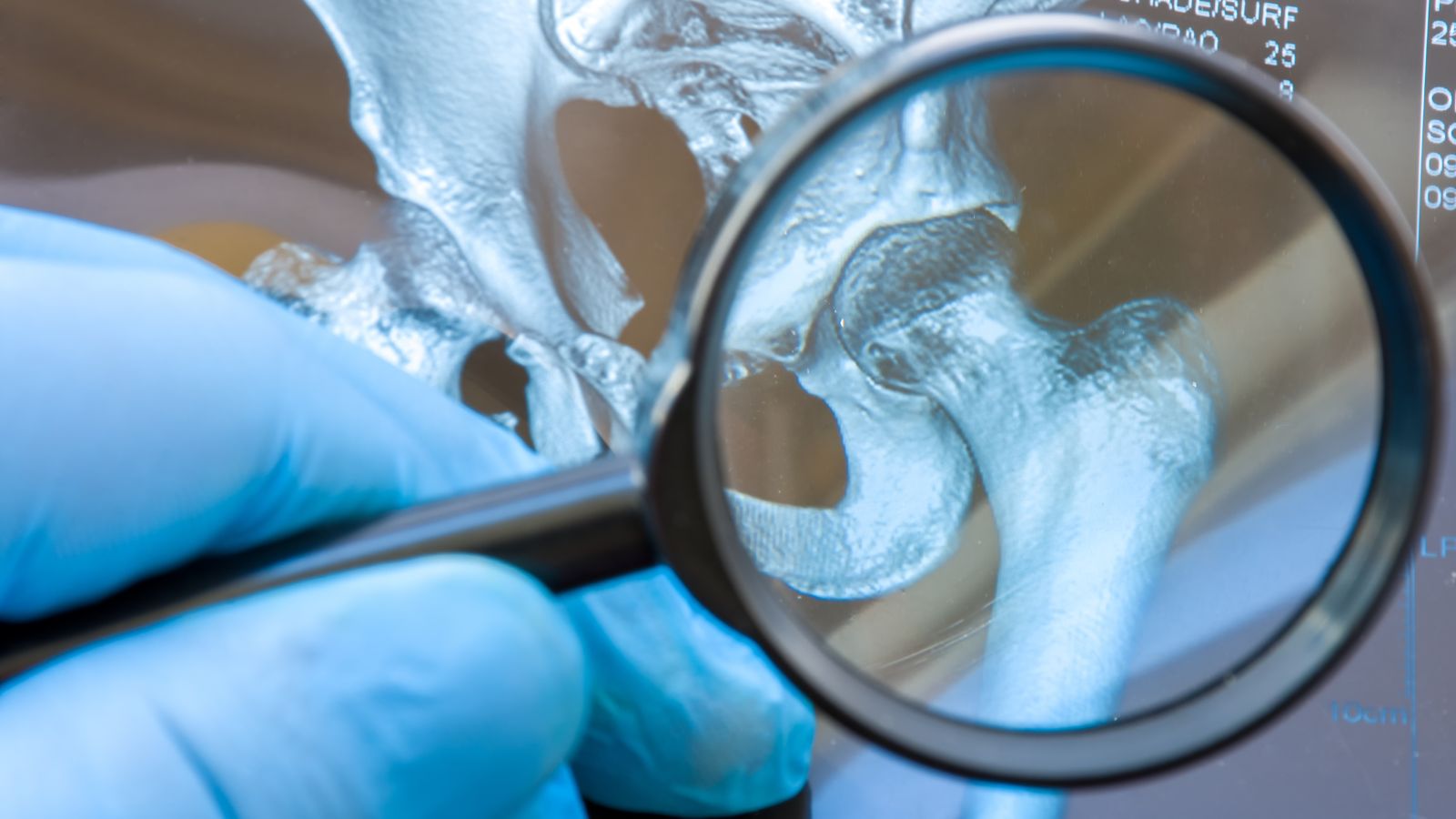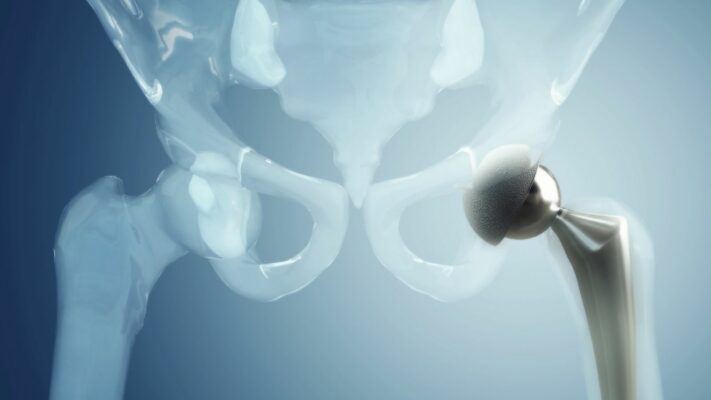Prof. Dr. Murat Demirel, one of the best orthopedic doctors performing hip arthroscopy in Ankara, uses modern surgical techniques in the diagnosis and treatment of hip joint pain, movement limitations, and structural disorders. Hip arthroscopy is a minimally invasive method in which problems inside the joint are treated through small incisions with the help of a camera and special surgical instruments. This allows patients to experience less pain, a shorter recovery period, and a faster return to daily life. Among the hospitals performing hip arthroscopy in Ankara, Prof. Dr. Demirel applies personalized treatment plans for each patient in centers equipped with advanced medical technology and high hygiene standards.
Before the surgery, Prof. Dr. Demirel conducts a detailed evaluation to clarify the cause of the problem in the joint and closely monitors his patients after the operation. With post-hip arthroscopy medical advice, he ensures the recovery process is safe, fast, and long-lasting. In addition, by providing transparent and up-to-date information about hip arthroscopy prices in Ankara, he helps patients make informed decisions. You can also protect your hip health, reduce pain, and improve mobility by getting in touch immediately to schedule an appointment.
| Surgery Name | Hip Arthroscopy |
| Application Area | Hip joint |
| Purposes of Use | Femoroacetabular impingement (FAI), labrum tears, removal of loose bodies, synovitis, treatment of cartilage damage |
| Surgical Method | Arthroscopic (minimally invasive surgery performed through small incisions and with a camera) |
| Type of Anesthesia | General anesthesia |
| Operation Duration | Usually 1–2 hours |
| Hospital Stay | Same-day discharge or 1 night stay |
| Recovery Process | 6–12 weeks; gradual loading and physical therapy recommended |
| Complications | Nerve damage, infection, joint stiffness, persistent pain, arthrofibrosis |
| Advantages | Small incision, shorter recovery period, less postoperative pain and scarring |
| Alternative Methods | Open surgery, conservative treatment (physical therapy, medication, injections) |
| Suitable Patient Profile | Young and middle-aged individuals with intra-hip mechanical problems who do not benefit from conservative treatment |


Prof. Dr. Murat Demirel
Orthopedics and Traumatology Specialist
Orthopedics Specialist Prof. Dr. Murat Demirel was born in Ankara in 1974. He completed his primary education at Ankara Kavaklıdere Primary School and his secondary and high school education at Ankara Atatürk Anatolian High School. Dr. Demirel graduated from Ankara University Faculty of Medicine in 1998 and completed his residency in Orthopedics and Traumatology at Ankara Numune Training and Research Hospital, 1st Orthopedics and Traumatology Clinic, in 2004.
PhD
Ankara University Institute of Health Sciences
Specialization
Ankara Numune Training and Research Hospital, 1st Orthopedics Clinic
Medical School
Ankara University Faculty of Medicine
Yazı İçeriği
What is Hip Arthroscopy and How Does It Work?
You can think of hip arthroscopy in its simplest form as “keyhole surgery.” While traditional open surgeries require a long incision and muscle separation to reach the joint, in hip arthroscopy this is done through just a few millimeter-sized small holes. Through one of these holes, we insert a thin instrument called an “arthroscope” with a high-resolution camera at its tip into the joint.
This camera projects all the structures inside the joint – the cartilage surfaces, the cartilage ring called the labrum, ligaments, and the joint capsule – onto a video screen magnified about 10–20 times. This allows us to clearly identify even the tiniest damage that cannot be seen with the naked eye. The surgeon uses these detailed images as a roadmap and works with miniature surgical instruments inserted through other small incisions. Just like a watchmaker repairing tiny parts with delicate tools, we can stitch torn tissue, correct damaged cartilage, or shave off an extra bone spur that causes impingement in the joint with these instruments.
During the surgery, the inside of the joint is continuously washed with sterile fluid to clear the field of view and stop minor bleeding. This fluid also slightly expands the joint capsule, providing us with a more comfortable working space. The main principle of the procedure is to reach and repair the problem area directly while causing minimal damage to healthy tissues. This minimally invasive approach also positively affects the postoperative recovery process.
In Which Cases Does Hip Arthroscopy Become an Option?
Hip arthroscopy is not a magical solution for every hip pain. The decision to use this method is made after a careful evaluation process. Generally, hip arthroscopy is considered when the patient’s complaints do not improve with non-surgical (conservative) methods such as rest, activity modification, painkillers, anti-inflammatory medications, and a comprehensive physical therapy program. If pain and loss of function persist despite these treatments for months, looking inside the joint to identify and solve the problem may be the best approach.
The conditions in which hip arthroscopy is most frequently and successfully applied are as follows:
- Femoroacetabular Impingement (FAI) Syndrome
- Hip Labrum Tears
- Intra-articular Loose Bodies (Cartilage or bone fragments)
- Joint Cartilage Damage (in limited areas)
- Synovitis (Inflammatory thickening of the joint lining)
- Snapping Hip Syndrome (painful and persistent types)
- Greater Trochanteric Pain Syndrome (Bursitis and tendon problems)
- Abductor Tendon Tears (Gluteus medius/minimus)
- Ligamentum Teres (Intra-articular ligament) Tears
- Borderline Hip Dysplasia (in selected cases)
- Intra-articular Adhesions
Especially in young and active individuals, hip arthroscopy is a valuable “joint-preserving surgery” method used to protect the hip joint, reduce the risk of developing more severe osteoarthritis in the future, and keep the patient away from major surgeries such as total hip replacement.
What Role Does Hip Arthroscopy Play in the Treatment of Hip Impingement (FAI)?
Hip impingement, or femoroacetabular impingement (FAI) in medical terms, has recently been recognized as one of the most common causes of hip pain. To understand this condition, imagine the hip joint as a ball and socket. Normally, the surfaces of the ball and socket are smooth and move in perfect harmony. In FAI, however, this harmony is disrupted.
There are two main types. In “Cam type” impingement, there is an extra bone bump between the head and neck of the femur. This bump collides with the rim of the socket, especially when the hip is flexed or rotated inward, damaging the labrum and cartilage. In “Pincer type” impingement, the problem lies in the socket; the rim of the socket is longer than normal and excessively covers the ball. In this case, the socket pinches the neck of the ball like a clamp during movement, again causing labrum damage. Most of the time, these two types coexist (mixed type).
Hip arthroscopy allows us to work with the precision of a sculptor in treating FAI. With the arthroscopic camera, we can clearly see these abnormal bone bumps. Then, using a special motorized shaver (burr), we carefully shave this excess bone tissue and restore the joint to its normal anatomical shape. This procedure is called “osteoplasty.” After eliminating the bony impingement, we also repair the secondary damage it caused, especially the labrum tear. Thus, we treat not only the symptoms but also the root cause of the problem. In this way, we relieve pain, prevent further joint damage, and slow down the progression toward osteoarthritis.
Contact us for detailed information and an appointment!
How Does Hip Arthroscopy Provide a Solution in the Presence of a Labrum Tear?
The labrum is a special cartilage structure that surrounds the rim of the hip socket like a seal or a C-shaped ring. This small but important tissue has multiple functions. It increases joint stability, helps nourish the cartilage by keeping the joint fluid inside, and ensures that the load on the joint is distributed evenly. We can think of it as the protective gasket of the joint.
This seal can tear due to trauma (fall, sports injury), repetitive strenuous movements, or an underlying hip impingement (FAI). When the labrum tears, patients usually describe sharp pain in the groin or front of the hip, along with mechanical symptoms such as catching, locking, or hearing a “click” sound. The pain often worsens when sitting for a long time, getting in and out of a car, or during sports activities.
Hip arthroscopy has become the gold standard in the treatment of labrum tears. Our goal is to repair this valuable tissue whenever possible. Using special sutures attached to tiny screws (suture anchors) placed into the bone, we stitch the torn labrum back firmly to the bony rim where it belongs. This repair allows the labrum to regain its original function. If the labrum tissue is too worn or degenerated to be repaired, we clean up only the unstable fragment that causes pain and catching (debridement). However, the current approach is to repair and preserve the labrum for the long-term health of the joint.
How Does the Preparation Process for Hip Arthroscopy Surgery Proceed?
When the decision for hip arthroscopy surgery is made, the preparation process begins to ensure a successful outcome. This process is not just about waiting for the surgery day; it includes steps that both you and the surgical team need to pay attention to. In the preoperative consultation with your doctor, your overall health, past illnesses, and medications you regularly use are carefully reviewed.
Here are some important points to pay attention to during preoperative preparation:
- Inform about all medications you are taking (including prescription, over-the-counter, and herbal supplements)
- Adjust blood thinners under doctor’s supervision (usually 1 week prior)
- Take a shower with antiseptic soap on the morning of surgery or the night before
- Do not eat or drink anything after midnight before surgery (fasting)
- Prepare loose, comfortable, and easy-to-wear clothing for the surgery day
- Arrange for an escort to take you home after hospital discharge
- Leave valuables and jewelry at home
Each of these preparation steps is designed to increase the safety of the surgery and minimize possible risks. Especially managing blood thinners and following fasting rules are vital to prevent unwanted situations during anesthesia and surgery.
What Awaits Patients on the Day of Hip Arthroscopy Surgery?
On the surgery day, when you arrive at the hospital at the scheduled time, you are greeted by a calm and professional environment. After your admission procedures are completed, you are taken to your room and prepared for surgery. You will be given a special surgical gown to wear. A nurse will place an intravenous line in your arm for administering medications and fluids during and after surgery. You may be given a sedative to help you relax before being taken into the operating room.
In the operating room, the anesthesiologist meets you and explains the type of anesthesia that will be used. Hip arthroscopy is usually performed under general anesthesia (completely asleep). After the anesthesia takes effect, the surgical team positions you appropriately on the operating table. Since the hip joint is very narrow and deep, a special system is applied to your leg to provide controlled traction. This traction slightly opens the joint space by a few millimeters, giving us a safe working area.
Next, your hip area is cleaned with sterile solutions and covered with sterile drapes. The surgeon makes several small incisions (portals) of 0.5–1 cm at previously planned sites. Through these portals, the camera and other surgical instruments are inserted into the joint. Every corner of the joint is carefully examined on the monitor, the diagnosis is confirmed, and the planned repair procedures (bone shaving, labrum repair, cartilage correction, etc.) are meticulously performed. At the end of the surgery, the instruments are removed, the joint fluid is drained, and the small incisions are closed with one or two stitches or special tapes, followed by a sterile dressing. Afterwards, you are taken to the recovery room where you will be observed until the effects of anesthesia completely wear off.
How Are the First Weeks of Recovery After Hip Arthroscopy?
The postoperative period is as important as the surgery itself and is one of the keys to success. Most patients can return home on the same day or the next day. It is completely normal to experience some pain, swelling, and bruising in the hip during the first few days. Painkillers will be prescribed to help you get through this period more comfortably.
In the first weeks at home, you need to follow some basic rules to speed up recovery and protect the repaired tissues. The simple but effective “R.I.C.E.” protocol is very helpful.
Rest: Avoid straining your hip and give your body time to heal.
Ice: Apply ice to the operated area through a towel at regular intervals (for example, 15–20 minutes every 2 hours) to reduce swelling and pain.
Compression: If recommended by your doctor, you can use an elastic bandage to control swelling.
Elevation: When sitting or lying down, support your operated leg with pillows to keep it slightly elevated above heart level.
It is very important to use the crutches provided to you during this period. Depending on your doctor’s instructions, you will need to walk without putting weight on the leg or with partial weight for 2 to 6 weeks. This is crucial for the proper healing of the repaired labrum or cartilage.
There are also some movements you should avoid during the first weeks of recovery:
- Deep squatting
- Crossing your legs
- Sitting on low chairs or couches
- Sitting in the same position for longer than 30 minutes
- Making sudden twisting movements
Why Is Physical Therapy and Rehabilitation After Hip Arthroscopy So Important?
If we compare hip arthroscopy surgery to repairing a car engine, physical therapy and rehabilitation are like fine-tuning the car and taking it for test drives to ensure it works at its best performance. No matter how successful the surgery is, if the right rehabilitation program is not followed afterwards, the results may be insufficient. Rehabilitation is an integral part of the surgery and the most important complement to its success.
The rehabilitation program has fundamental goals:
- Control pain and swelling
- Prevent the formation of adhesions in the joint
- Gradually restore normal range of motion of the hip
- Strengthen the hip and leg muscles weakened after surgery
- Improve balance and coordination (proprioception) skills
- Reestablish a normal and pain-free walking pattern
- Return the patient safely to daily activities and sports
Rehabilitation usually begins just a few days after surgery, under the supervision of a physiotherapist. This process is gradual and tailored individually according to each patient’s recovery pace. It starts with passive and gentle movements, and as the weeks progress, the difficulty and variety of exercises increase. Following this program with patience and determination is critical for regaining hip function and experiencing the long-term benefits of the surgery. Remember, rehabilitation is not a burden but the strongest ally in your recovery journey.
What Advantages Does Hip Arthroscopy Offer Compared to Open Surgery?
The main reason for the growing popularity of hip arthroscopy is the significant advantages it offers over traditional open surgery. These advantages arise from its “minimally invasive” nature, which is based on causing minimal damage to tissues.
The main differences between open surgery and hip arthroscopy, and the advantages of arthroscopy, can be listed as follows:
Smaller Incision: While open surgery requires a 15–20 cm incision, arthroscopy requires only a few 0.5–1 cm incisions.
Less Pain: Less tissue damage results in significantly milder postoperative pain.
Better Cosmetic Results: Instead of a large surgical scar, only a few nearly invisible small scars remain.
Less Blood Loss: The amount of bleeding during surgery is much less.
Lower Risk of Infection: Since the incisions are small, the risk of infection is reduced.
Shorter Hospital Stay: Patients are usually discharged on the same day or the next day.
Faster Recovery: Healthy tissues are preserved, allowing patients to return to their normal lives and work much faster.
Earlier Physical Therapy: Rehabilitation can begin earlier, which accelerates functional recovery.
Does Hip Arthroscopy Carry Risks Like Any Other Surgery?
Hip arthroscopy is generally a very safe surgical procedure with low complication rates. However, it should not be forgotten that every surgical intervention, from the simplest to the most complex, carries potential risks. Transparent information for our patients on this matter is very important for them to make informed decisions:
- General surgery and anesthesia-related risks are common to all operations.
- Anesthesia-related reactions
- Infection
- Deep vein thrombosis (blood clot in leg veins)
- Pulmonary embolism (blood clot traveling to the lungs)
- Bleeding or hematoma at the surgical site
There are also some rare but specific risks related to hip arthroscopy.
Temporary Nerve Numbness: Due to the traction applied to the leg during surgery, temporary loss of sensation or numbness may occur in the groin, thigh, or genital area. In most cases, this completely resolves on its own within a few days or weeks.
Joint Stiffness (Arthrofibrosis): Excessive stiffness in the joint may occur after surgery. Early and proper physical therapy minimizes this risk.
Unintentional Cartilage Damage (Iatrogenic): Healthy cartilage tissue may be accidentally damaged with instruments during surgery. The surgeon’s experience is the most important factor in reducing this risk.
Hip Instability: Especially if the joint capsule is excessively loosened or inadequately repaired, a feeling of insecurity in the hip may develop.
In Which Cases Is Hip Arthroscopy Not Recommended?
Although hip arthroscopy is effective in many hip problems, it is important to know that it is not suitable for every patient or condition. Some situations increase the likelihood of failure or completely prevent surgery. These are called “contraindications.”
Situations where hip arthroscopy is generally not performed or requires very careful consideration are as follows:
Advanced Hip Osteoarthritis: If the joint space is severely narrowed and the cartilage tissue is completely lost, arthroscopy is not beneficial. The correct treatment for these patients is total hip replacement.
Presence of Active Infection: If there is an active infection in the hip joint or anywhere else in the body, surgery should be postponed due to the risk of spreading the infection to the joint.
Complete Hip Ankylosis: If the joint has completely lost motion and the bones have fused together, arthroscopy cannot be performed.
Severe Hip Dysplasia: In cases where the hip socket is developmentally too shallow and does not adequately cover the femoral head, arthroscopy alone is insufficient. This condition requires larger corrective bone surgeries.
Inability of the Patient to Adhere to Rehabilitation: If the patient cannot comply with the long and disciplined physical therapy process required after surgery, the results may not be satisfactory.
Morbid Obesity: Excess weight can make the surgical technique more difficult and negatively affect both postoperative complications and recovery.
What Are the Success Rates and Long-Term Expectations After Hip Arthroscopy?
In properly diagnosed and appropriately selected patients, hip arthroscopy performed by an experienced surgeon has quite high success rates. By “success,” we mean a significant reduction in the patient’s pain, restoration of hip function, and improvement in quality of life. The majority of patients operated on for common problems such as labrum tears or FAI benefit significantly from surgery.
Patient satisfaction rates are generally reported between 85–95%. Especially athletes can return to their pre-injury sports levels at high rates with the correct rehabilitation program after surgery. Long-term studies show that hip arthroscopy not only relieves pain in the short term but also protects hip health by slowing or delaying the progression of osteoarthritis. This means the patient can live with their natural joint for many more years and the need for total hip replacement can be postponed.
However, some factors affect success. If there is already significant cartilage damage or osteoarthritis before surgery, the success rate may decrease. The patient’s age, general health status, smoking habits, and most importantly, compliance with the postoperative rehabilitation program are factors that directly influence the outcomes. Having realistic expectations and being patient during the recovery process are among the most important factors that increase patient satisfaction.
What Factors Determine the Cost or Price of Hip Arthroscopy?
The cost of hip arthroscopy, a surgery requiring advanced technology, may vary depending on several factors. Therefore, it is not correct to talk about a fixed price. The main factors affecting the cost are as follows.
These factors can be listed as:
Complexity of the Surgery: The type of procedure to be performed (for example, just tissue cleaning or a comprehensive labrum repair with bone shaving) directly affects the cost.
Medical Materials Used: The number and quality of high-tech, usually imported disposable materials such as suture anchors, special blades, and shavers used during surgery are important cost items.
Hospital Equipment and Service Standards: The technological infrastructure of the hospital where the surgery is performed, the comfort it provides, and the quality of service play a role in pricing.
Experience of the Surgeon and Surgical Team: Hip arthroscopy is a technically challenging surgery that requires special training and high experience. The surgeon’s and team’s experience in this field is naturally a factor.
Type and Duration of Anesthesia: The duration of surgery and the anesthesia technique used are also factors affecting the total cost.
Contact us for detailed information and an appointment!
Frequently Asked Questions
What is hip arthroscopy surgery?
Hip arthroscopy surgery is a minimally invasive (closed) surgical procedure performed to visualize the inside of the hip joint and treat various problems. It is performed by inserting a camera and special surgical instruments into the joint through small incisions.
In which cases is hip arthroscopy performed?
Hip arthroscopy can be performed to treat labrum tears, cartilage damage, loose bodies, hip impingement syndrome (FAI), synovitis, and some congenital abnormalities in the hip joint. It is an effective method in both diagnosis and treatment.
What are the advantages of hip arthroscopy surgery?
Compared to open surgeries, it is performed through smaller incisions, has a shorter recovery period, and carries a lower risk of infection. Patients get back on their feet faster and the risk of damaging the surrounding tissues is minimal.
What should be considered before and after surgery?
Before surgery, it is necessary to fast as recommended by the doctor, stop blood thinners, and undergo required tests. After surgery, it is important to use crutches for a period of time, follow the doctor’s recommended exercise program, and attend follow-up appointments without interruption.
What is the recovery process like after hip arthroscopy surgery?
The recovery process depends on the extent of the procedure. Patients can usually return to light activities a few days after surgery. Full recovery and return to sports may take 2–3 months. Physical therapy and regular exercises accelerate recovery.
What complications may occur during hip arthroscopy?
As with any surgery, risks such as infection, bleeding, nerve injury, and vascular damage exist. However, these complications are very rare and minimized with proper surgical technique.
Will there be pain after surgery?
Mild to moderate pain during the first few days after surgery is normal. This process can be managed with painkillers prescribed by the doctor. In case of severe or persistent pain, the doctor should be consulted.
Who is not recommended for hip arthroscopy surgery?
Hip arthroscopy is not recommended for patients with advanced osteoarthritis, completely narrowed joint space, or some elderly patients. The decision for treatment is made after evaluating the patient’s overall health and joint condition.
When can daily activities be resumed after surgery?
Generally, patients can perform light household tasks a few days after surgery. Office workers can return to their jobs within 1–2 weeks. However, those with heavy physical jobs and athletes may need up to 6–12 weeks.
Are recurrent problems common after hip arthroscopy?
When performed on the right patient with the appropriate technique, recurrent problems after hip arthroscopy are rare. However, if the underlying joint disease progresses or sufficient rehabilitation is not completed, some complaints may reoccur.




